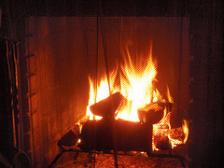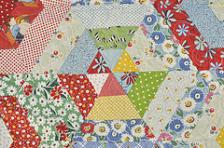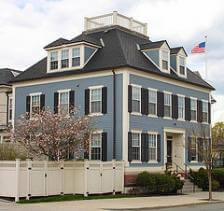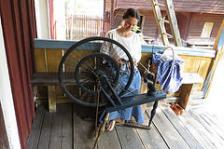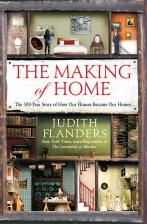10 Ways Technology Has Changed Your House
A guest post by Judith Flanders, author of the new book The Making of Home: The 500-Year Story of How Our Houses Became Our Homes.
From Judith Flanders’ The Making of Home, here are ten ways technology has changed your home:
-
1. Window glass only became common in many places in the nineteenth century. Until the sixteenth century, it was so valuable (and so fragile) that the panes were routinely removed from their frames and stored away when the owners were away. When a house was sold, the glass was considered to be part of the furnishings, not the building, and was sold or bequeathed like any other personal possession.
- 2. Before central heating, heat came from fireplaces. Keeping a fire burning was labour-intensive, so families tended to stick to one room, no matter how many different occupations were being undertaken. Once central heating arrived, it didn’t take more work to keep more rooms warm. People moved to different rooms to perform different functions.
-
3. For most of history, people cooked over open fires, and there was rarely space for more than one pot. Solids and liquids were put in a pot to be boiled or stewed together, together with a starch: before stoves, meals with different dishes were difficult, expensive, and therefore rare.
- 4. Home-sewn quilts are a product of the industrial revolution, not hardy pioneer life. Before cheap textiles, clothes and goods were cut square, so that every last inch of precious fabric was used up. Only in the 19th century did textiles become cheap enough for most people that ‘scraps’ were available to make quilts common.
- 5. Until gas-lighting arrived in the 19th century, most people reserved their social outings in the evening to those nights in the month when the moon was full.
-
6. Working after dark was not easy. Fires were labour-intensive, candles expensive, and if they blew out, hard to relight before matches were manufactured in the 19th century. Instead, a tinder box held a piece of fabric, a striker, and a flint. The flint was struck over the fabric until a spark set it alight. A candle was then lit from this, before the small fire was tamped out. It could take a practised hand three or four minutes to get a flame; those with less experience needed half an hour.
-
7. ‘Colonial style’ houses would have astonished the colonists themselves. Cheap white paint only became available in the 1840s, houses before being generally left unpainted, and just weathering to a muddy brown, while gardens and yards were not fenced in, instead being dotted with middens and piles of waste.
- 8. Spinning-wheels have retrospectively been given ‘colonial’ status. In reality, less than a quarter of colonial homes had spinning wheels, fewer still had time to weave, and most fabric was purchased, not ‘homespun,’ which only became more prevalent in the 19th century.
- 9. Furniture was expensive, and therefore less common, than we now think. Before 1670, half the houses in Connecticut had no tables at all, and while 80 percent had chairs, households averaged fewer than three each, less than half as many as there were residents. As late as the mid-eighteenth century, a third of houses in one county of Delaware still had no tables, and the same number had no chairs.
- 10. 20th-century suburbia grew directly out of World War II, as the government invested in sewers, roads, public transport, and gas. Wartime research into aluminum and prefabricated construction techniques was also released at no cost to suburban developers.
For more info about Judith Flanders, check out www.JudithFlandersBooks.com. And for additional historical facts and features about how your house became a home, don’t miss Judith’s newest book, The Making of Home, available now.
Plus, be sure to check out Domestic CEO’s interview with Judith Flanders on Quick and Dirty Tips this Thursday September 10, 2015.
Judith Flanders is an international bestselling author and one of the foremost social historians of the Victorian era. She is a frequent contributor to The Wall Street Journal, Daily Telegraph, Guardian, Spectator, and the Times Literary Supplement. She lives in London.



